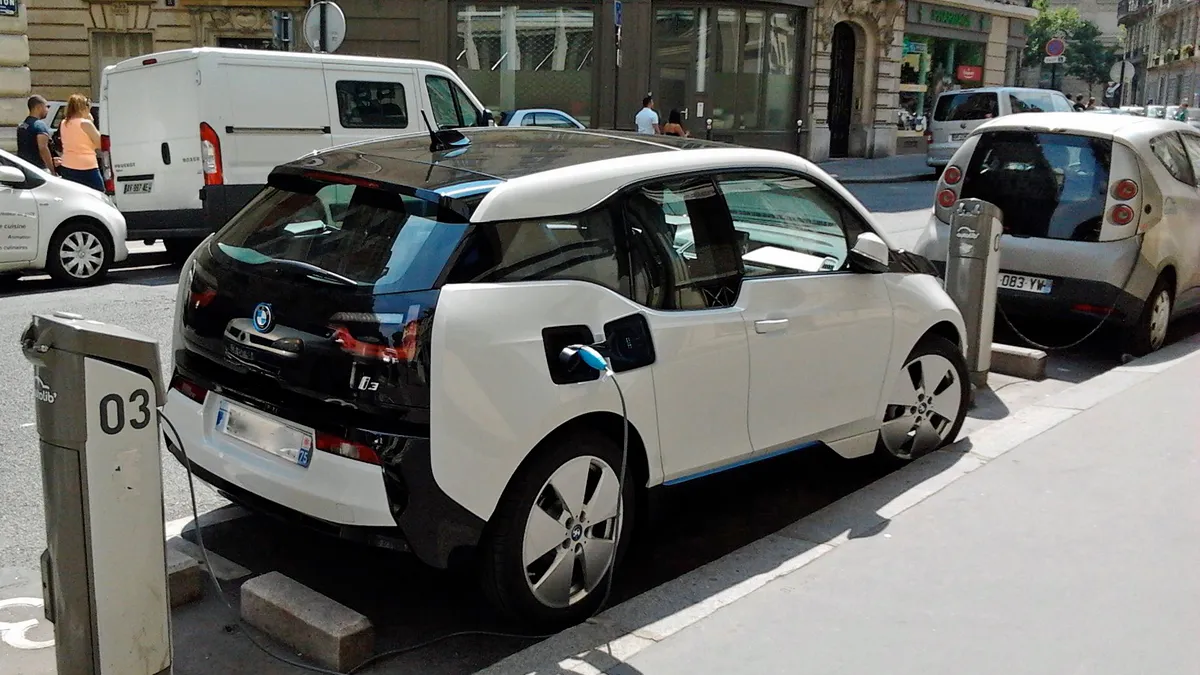Dive Brief:
- Southern California Edison Jan. 12 detailed four pilot programs aimed at accelerating the electrification of the state's transportation, with half the projects focused on fleet and heavy-duty uses.
- State regulators approved the projects Jan. 11, along with almost a dozen more proposed by Pacific Gas & Electric and San Diego Gas & Electric.
- The California Public Utilities Commission had directed the state's three large investor-owned utilities to file transportation pilot programs as part of the effort to reduce greenhouse gas emissions 40% below 1990 levels by 2030.
Dive Insight:
SCE's projects, like all of the pilots approved by the CPUC, are relatively small and targeted. Each is expected to cost less than $4 million and take less than a year to implement. The utility is largely focused on researching adoption and how charging stations are utilized.
While officials say electric vehicles will be a key factor in balancing the grid, it is still premature to be looking at widespread adoption of vehicle-to-grid services. SCE's proposals do not include demand management or grid services aspects.
Laura Renger, SCE's principal manager of air and climate policy, said the utility sees electric vehicles as "mobile distributed resources" with the capability of soaking up excess renewable energy or assisting with grid management.
"EVs are incredibly important, and not just because of greenhouse gas emissions," Renger said. "They are also a beneficial grid resource. ... As we move to solar overgeneration, we'll have a lot of extra capacity on the grid."
SCE proposed five projects, but an EV ridesharing proposal was rejected.
A residential "Make-Ready Rebate Pilot" will provide rebates to help offset the cost of installing an EV charger, including installing a new circuit, panel or new meter socket. The rebate does not cover costs for charging equipment, and the utility believes up to 5,000 residential customers could participate.
SCE is also proposing to deploy and operate five DC fast chargers in urban areas, with up to five dual-port charging stations at each site resulting in up to 50 new fast charging ports. The utility is looking at urban clusters of fast chargers located near apartments, hoping to entice adoption from renters without a permanent parking space or dedicated charger. SCE would install, own and maintain the make-ready infrastructure at the participating customer sites.
Site hosts will be able to select from multiple approved DCFC stations, and receive a rebate to cover the base cost of the charging stations. SCE says potential site hosts could include cities, parking lot operators and EV service providers that provide public access to the DCFC stations.
On the fleet side of EV infrastructure, SCE will roll out make-ready infrastructure at bus depots and along bus routes to serve electric commuter buses. The utility will provide a rebate to participating customers to cover the cost of the charging equipment and installation. The goal of the program is to expand the number of electric buses operating in the area.
SCE will also develop sites for nine electric cranes to be installed at the Port of Long Beach. Currently, the cranes use on-board diesel engines to power the electric lift and propulsion drives. SCE will remove the diesel engines and provide a high voltage utility connection and the electric infrastructure to power the cranes. Similarly, SCE will also prepare the site for electric yard tractors.
Renger said California simply won't be able to meet its 2030 goals without a large push to electrify all areas of the transportation sector. "We have the size and scale to really bring about market transformation," she said. "We cannot meet the 2030 greenhouse gas goals without significant investment in electric vehicles."
That means 7 million EVs on the road, 80% of the state's energy coming from carbon-free sources and 30% of space and water heating electrified, according to an SCE white paper.















